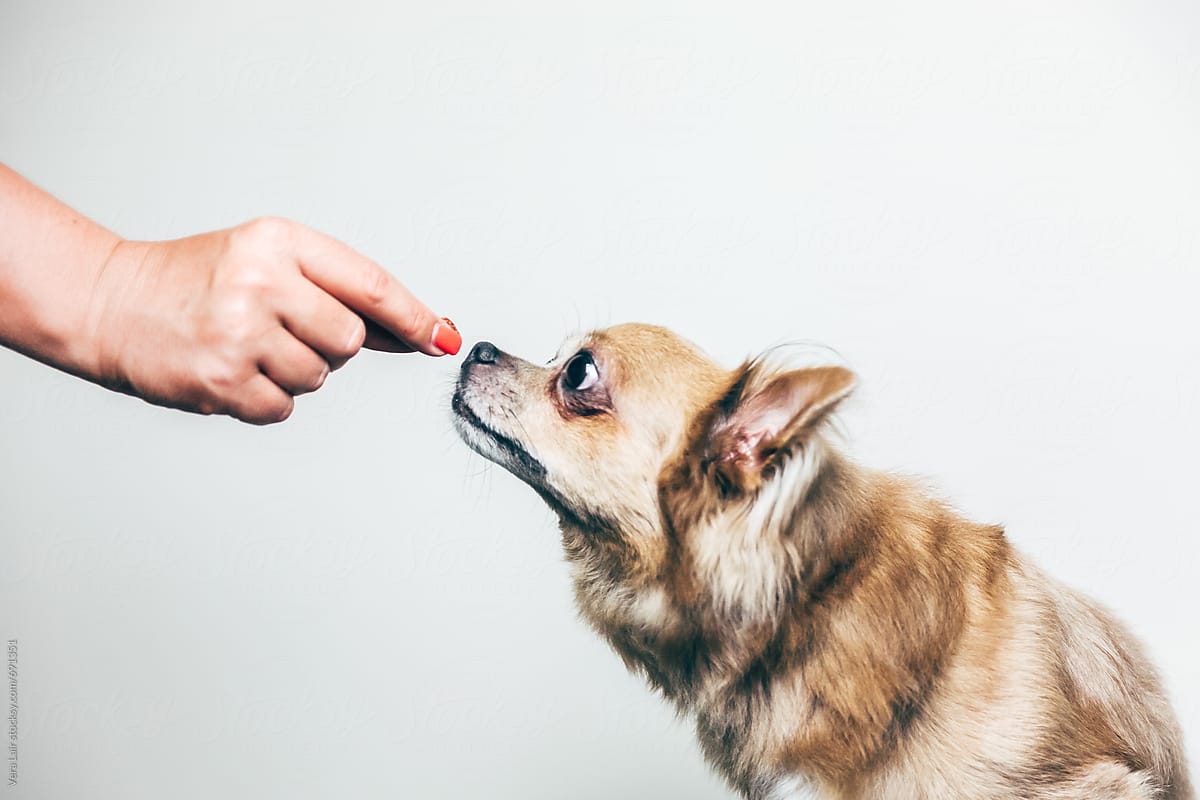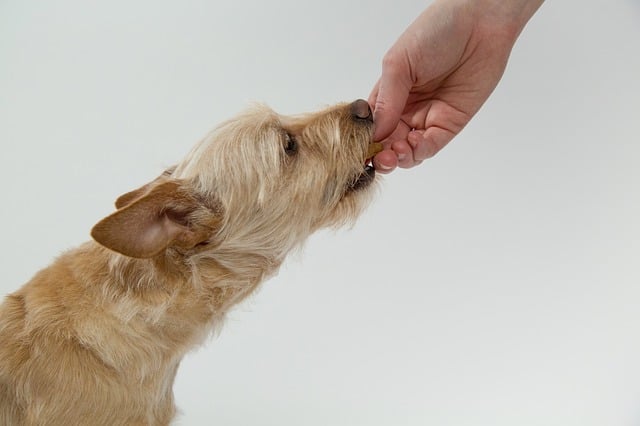If you’re looking for a simple way to teach your dog good manners, boost their confidence, and strengthen your bond, try feeding them by hand.
Contrary to what you may believe or have heard, hand feeding your dog actually has a huge range of benefits.
Hand feeding your dog their meals is an extremely useful training tool. Giving your dog access to a constant food supply can completely eliminate their food drive and therefore make training so much more difficult. Plus, it develops fussy dogs who get bored with the food they have available to them all the time!

Hand feeding your dog is one of the easiest ways to get your dog to start focusing more on you, and all that extra focus will make training your dog so much easier!
But hand feeding your dog isn’t just great for training; it’s particularly useful for shy or fearful dogs because it builds trust, provides socialization, and helps boost a dog’s confidence. It’s a great way to strengthen the bond with your dog!
How hand feeding can benefit your dog
- Relationship and trust building. Hand feeding your dog teaches them that when you reach toward them good things happen, like they get delicious food and treats! It also teaches focus, since your dog is getting fed when they pay attention to you.
- Resource Guarding. Hand feeding can help a dog who is already a resource guarder and help prevent a dog from resource guarding. By only feeding your dog from your hand, you show them that you are the gateway to valuable things and when you reach into their space it means food.
- Impulse Control. Close-hand feeding is accomplished by simply keeping your hand closed until your dog stops bugging you for the food. As soon as your dog backs away, looks away, or just stops pawing or licking at your hand, open your hand and feed them some food. Soon they’ll realize the quicker they show self-control, the quicker they get to eat.
- Shy or Fearful Dogs. Dogs who are nervous around people benefit greatly from hand feeding, especially if you get other members of the family, and eventually friends and neighbours to hand feed your nervous dog too. Don’t rush this process; start wherever your dog is most comfortable and gradually work up to more contact.
Introducing your dog to hand feeding
Make your dog work for their dinner with enrichment and puzzle toys.
They’re different from slow feeders in that they encourage your dog to use his nose or paws to crack a problem of some sort. However, just like slow feeders, puzzle toys will slow your dog down as they eat, which can be helpful for dogs that wolf down their food and water in seconds. They also provide much-needed mental stimulation to keep your canine’s brain sharp.
Use meal times as a training session.
Taking 10 minutes to teach your dog something new is far more valuable than just tossing kibble into a food bowl. Some fun ideas to teach your dog include:
- Practical behaviours like sit, down, stay, heel, and come.
- Basic tricks like shake, high five, speak, and roll over.
- Fun, challenging tricks like weaves, play bows, sitting pretty, crawling, hopping onto or going under objects.
- Place training which works by teaching your dog a specific routine that can help them relax and calm down in stressful situations.
- Handling Practice. Practice letting your dog handle their sensitive bits by feeding them for letting you check his paws, ears, and teeth. This becomes an especially valuable skill set for vet visits.
Throwing out your dog’s food bowl is a great shortcut to giving your dog more mental and physical exercise. How will you make your dog work for their dinner?

